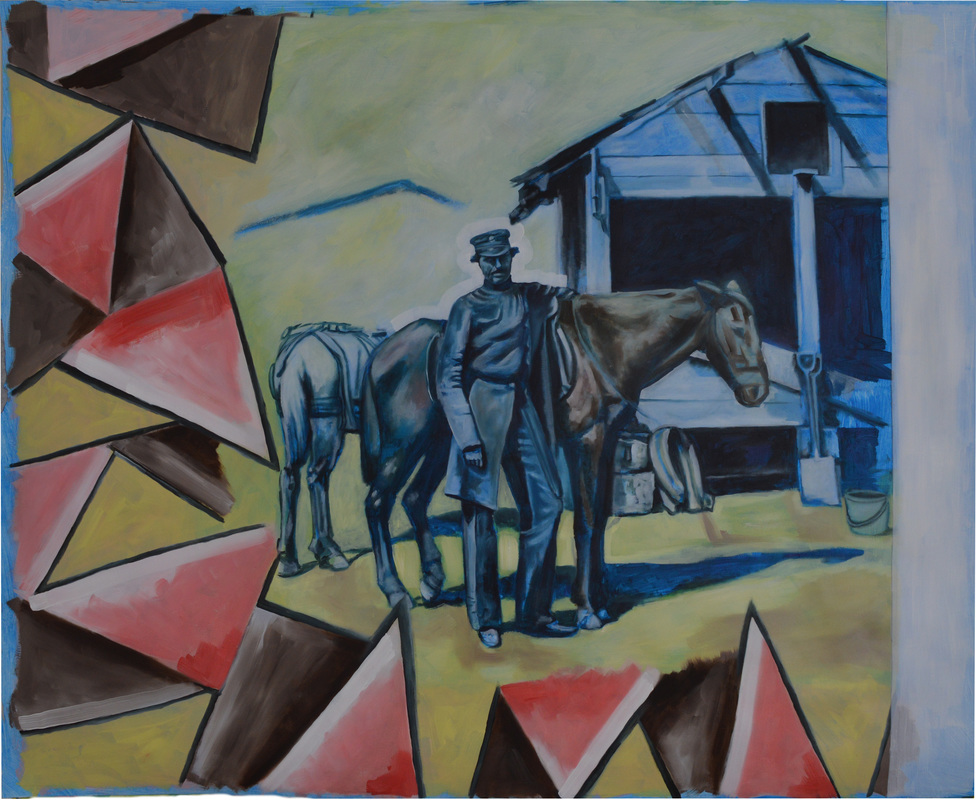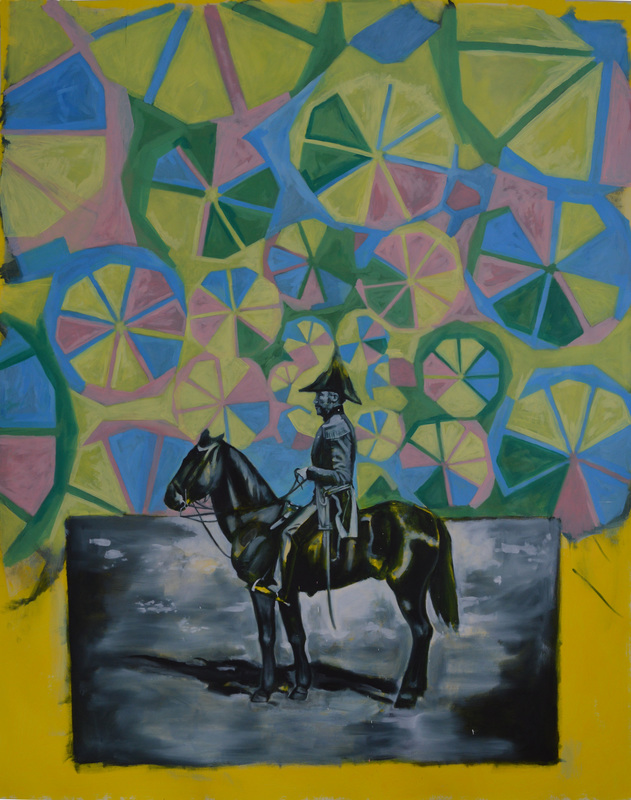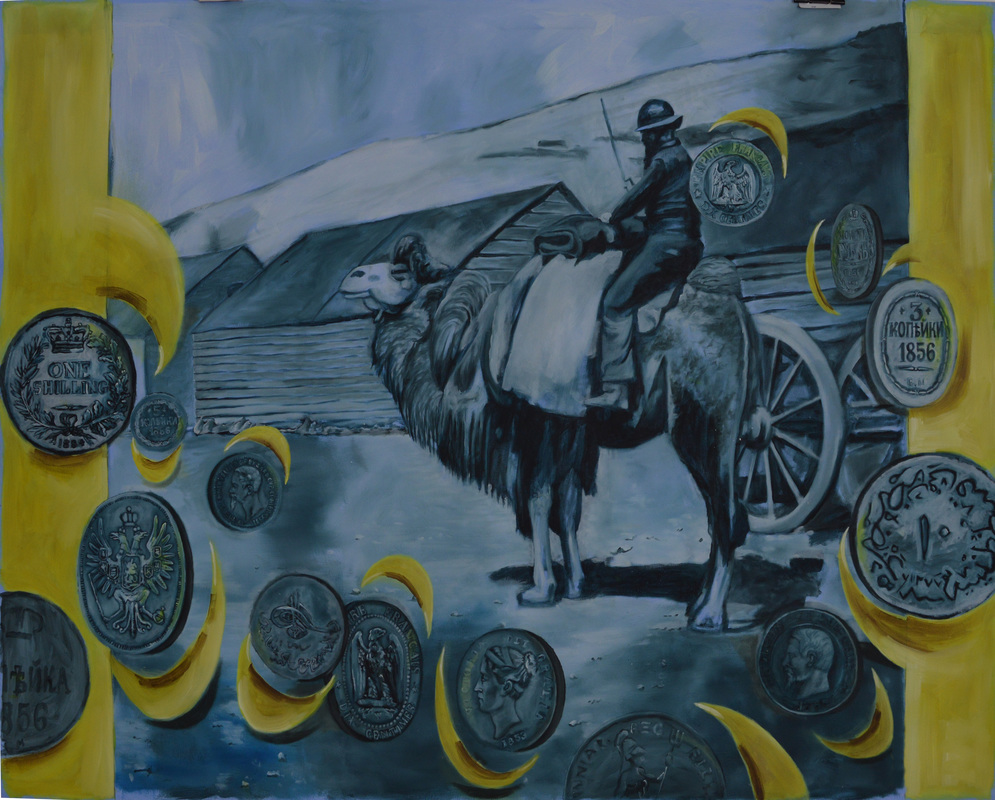04/10/15
Marco Cali: Satyr Paintings
An introductory text
Roger Fenton (1819-1869) is a key figure in the history of
photography at large, but, in particular, of photography as a form of artistic
expression, rather than a means of pure documentation. Founder and first
secretary of the Photographic Society (established in 1853 and later to become
the Royal Photographic Society), he had initially trained as a painter and thus
composed his photographic images with the eye of an artist. In 1854, Fenton spent
three and a half months in Balaklava, photographing the Crimean War, producing
more than 350 large format negatives, some of which were turned into woodblocks
and published in the Illustrated London News.

It is these images, to which Marco Cali finds himself drawn
and which he has used as the starting point for his series Satyrs, as well as
for some smaller paintings – all oil on paper, with no underdrawing – of
isolated standing figures, themselves further inspired by altarpiece fragments.
Cali’s
work expresses his underlying interest in outline, form and the suggestion of depth
and Fenton’s images therefore appeal on numerous levels.
Firstly, there is the enigma of conflicting shadows:
those cast naturally by the sun versus those imposed by Fenton’s flash. Then
there is the way in which the photographer would often burn the tops of his
images to obliterate unwanted elements, emphasise certain figures or create areas
of brightness. Both of these aspects add a level of abstraction to the images, something
which Cali extrapolates in his experimentation with light and shadow. His
breaking down of areas of the composition into geometric patterns and shapes,
and his addition of strong outlines in white or black, works to foreground
certain facets, manipulating the depth and, in a sense, reversing the
flattening of the scene inflicted by the camera. He deliberately opts to retain
Fenton’s contradictory shadows, enjoying the ensuing intrigue and implicit artistic
and interpretative licence.

Compositionally, Fenton’s works engage Cali for their
very deliberate central placing of figures on horse – or, indeed, camel – back.
Men are seen seated alone – isolated, displaying power, sexual prowess and
legitimacy – and, for Cali, resembling satyrs. Women, however, are always
accompanied by a man. The subject matter has further political – and within
this also personal – resonances for Cali, who himself hails from Genoa, a city
with its own colonial history and once part of Piedmont-Sardinia. During the
Crimean War, this kingdom joined with France and Britain to send half its army
to fight the Russians. In turn, it was permitted to send representatives to the
peace conference at the end of the war, where it was able to campaign for Italian
unification (Risorgimento). In a
sense then, Cali sees exploring the subject matter of the Crimean War as a way
of exploring his roots – and ethnic identity in general. References to this are
scattered liberally throughout his work, with images of contemporary coins from
all countries concerned; elements of Islamic abstraction; and the addition of gilding
– crescents, slivers of light and shadows – relating to medieval Byzantine or
Russian icons and book illumination.

The mid 19th century was a period of
innovation and change, where the nascent art of photography and the established
technique of painting were reciprocally influential. The early 21st
century is an equally pivotal moment, with digital photography and the ability
to Photoshop images increasingly usurping traditional methods. Cali describes
painting as ‘an alchemical process, a kind of magical realism that creates the
image in our eyes’. This process necessarily runs in parallel to both the
chemical and digital image-making magic of photography and Cali’s work draws on
aspects from all three disciplines, merging elements and questioning where
abstraction begins. His complex yet playfully experimental paintings work with layers
of meaning to create a unique exploration of depth, form and truth; a serious
reflection (both literal and metaphorical) with historical resonance.
Please visit Cali’s website to see more of his works
Images:
All © the artist
Satyr with Pink and Brown
oil on paper
100 x 80 cm
2014
Simon Says
oil on paper
127 x 100 cm
2015
Crescent Moon
oil on paper
100 x 80 cm
2015